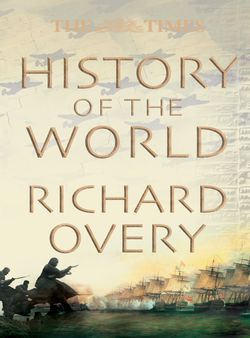Читать книгу The Times History of the World - Richard Overy - Страница 17
TO THE 1700S MELANESIA AND POLYNESIA
ОглавлениеMelanesia and Polynesia were first settled, from around 50,000 years ago, by modern people from southeast Asia. These adventurous people were the world’s first great blue-water sailors and seaborne colonists. They moved in waves, initially into New Guinea and its adjacent islands, and over time they gave birth to the Melanesian and then the Polynesian traditions. There were many great migrations, and the furthermost Pacific islands were reached as late as AD 750.
The Pacific islanders’ ancient ancestors, the early people or Homo erectus, lived in southeast Asia two million years ago. During this period, the Pleistocene, sea levels meant that the land mass of southeast Asia included much of the western part of what is now the archipelago. Remains of these people have been found in Java, part of the ancient continent known as the Sunda shelf, which is, for the most part, submerged today.
FIRST MIGRANTS
Around 50,000 years ago, Homo sapiens, or modern people, arrived in the region. These people were hunters and gatherers who drifted the short distance to the ancient continent of Sahul (modern-day Melanesia, which at the time was attached to Australia) around 40,000 years ago. Skulls of Homo sapiens found in the area date back to this time. These people had settled the New Guinea highlands by 25,000 years ago. Eight thousand years ago rising seas following the end of the last ice age caused the separation of New Guinea from the continent of Australia.
A second wave of southeast Asian immigrants known as the Austronesians, or Lapita people, arrived in New Guinea 6000 years ago. Lapita is their distinct, red-slipped pottery, often intricately decorated with geometric patterns, which can be traced right across the western Pacific. These new migrants were aided by their revolutionary new technologies, such as the sail and the outrigger canoe, and the development of root crops (taro) and pig and chicken farming. These advances made it possible for the Austronesians to discover and settle the islands across the vast expanse of the Pacific Ocean. Recent archaeology, genetic mapping and linguistic analysis show that this was not a rapid “express-train” migration, as initially thought, but rather a “slow-boat” penetration. Most of the rest of island Melanesia was settled as recently as 4000 years ago, and Fiji (the blurred boundary between Melanesia and Polynesia) was reached as late as 3500 years ago.
In the Tonga (reached 3200 BP (before present)) and Samoan (3000 BP) regions, the Melanesian material culture gradually evolved over a thousand years of relative isolation into what we now call Polynesian. Polynesian mariners using sophisticated navigation techniques and large ocean-going canoes reached and settled the Marquesas as late as AD 300, and from there the remaining Polynesian islands were discovered and settled. Early evidence shows settlement of Easter Island by AD 400, there to give birth to an extraordinary culture. The Society, Cook and Hawaiian Islands were settled by AD 600 and New Zealand by AD 750. Coconuts from southeast Asia reached Panama by AD 1500, and the sweet potato, though native to eastern Polynesia, travelled in the other direction, reaching highland New Guinea in the 16th century.
ISLAND RESOURCES
Between AD 750 and 1300, a multitude of largely independent cultures evolved on these little “island universes”. In the New Guinea highlands, where farming flourished, population density was the greatest in the world and easily sustainable. On most Pacific islands a balance was reached between population and natural resources; in less hospitable places, such as Easter Island and New Zealand, initially abundant resources became very depleted and, by the time of European contact in the 17th and 18th centuries, populations were in conflict and decline. When the Maoris arrived in Aotearoa (New Zealand) from about AD 750, they found large numbers of a flightless bird, the Moa. Some of these were gigantic, up to 3m (10ft) high and weighing up to 250kg (550lb). Unafraid of man, the Moa proved a readily available food source, and over the next 400 years they were hunted to extinction. The first Maoris thus established themselves with a Moa-fed burst in population numbers, while succeeding generations had to battle hard to sustain themselves.
